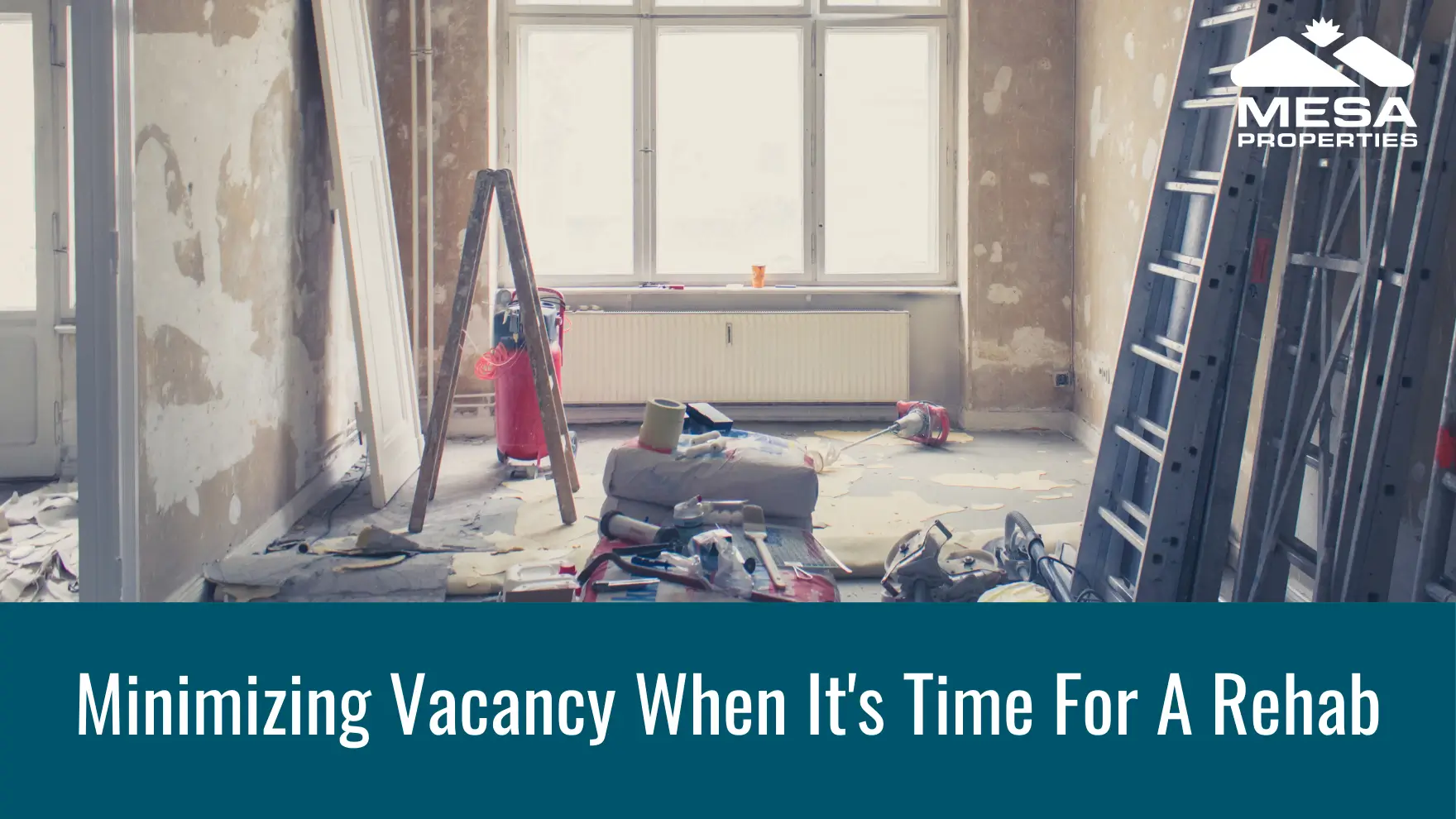Rehabs are just a normal part of the rental property life-cycle. You shouldn't have to do a rehab after every tenant turnover, but there will be times when a tenant vacates and you have quite a bit of work to do.
This can range from the standard new carpet and paint to full on bathroom or kitchen upgrades. Rehabs can be pretty pricey, especially if it's been several years since you've done any serious amount of work on the property.
It's also important to note that rehab is above and beyond the normal work you have to do during a standard tenant turnover that may just consist of some cleaning and touch up paint. If you just had a tenant move out after only living there for a year, chances are a lot of the repairs and cost for you to fix stuff that they damaged can be charged to their security deposit. A rehab is usually required after several tenant turnovers or after a long term tenant. After years of wear and tear, you are eventually going to have to do more than swap out the carpet and paint the walls. It will also be required if you get someone who trashes your home.
What needs to be done during a rehab
Every decision you make regarding what appliances, carpet quality, paint, bathroom upgrades etc should be made with the intention of earning a return.
For example, if choosing medium priced laminate floors over cheap vinyl means your home is more attractive to potential tenants, therefore reducing vacancy and increasing potential rent value, that's a good decision to make. The same goes for upgrading your kitchen counter and appliances. If there is a slightly more expensive item that will ultimately earn you more money going forward, it's a good idea to go that route.
You also want to choose items that will last a long time and not need to be replaced every time a tenant moves out. This is especially true of flooring.
You want to attract the best tenants possible. Doing everything as cheap as possible won't do that. Alternatively, getting the best upgrades like you would in your own home isn't a good idea. Realize that tenants will never take care of your home the way you would and spending a ton of money on the most expensive upgrades won't increase your rent value much or decrease your vacancy more. Those expensive upgrades will get damaged and need to be replaced meaning you may never earn a return on them at all before you have to replace them again.
If you go the cheap route with everything, your home won't stand out against the competition and you will likely attract the lower quality tenants. Lower quality tenants tend to not take very good care of the property and turnover quickly.
You need to find the balance and make every purchasing decision during a rehab with the intention of using each and every upgrade to earn yourself a higher return in the form of higher rent or a longer term tenant. Really expensive paint and carpet are still wear and tear items that will need attention after most move outs so going with the top of the line stuff is only going to cost more in the long term.
Handling the rehab: owner vs property management company
A lot of owners that work with a property management company just let the management company handle rehabs. After all, the management company has vendors that can do the work and that will move things around to ensure that big jobs get taken care of quickly.
Some owners take one look at the bid that the management company's vendor gave and think to themselves, "I can do all of that stuff myself for a lot less." A lot of the time, this is completely true! Contractors are billing for their time as well as parts and labor, so if you are a particularly handy owner, there's a good chance you can do the rehab yourself for significantly less than a licensed contractor.
What DIY rehab owners aren't even taking into account is how much more doing the rehab themselves actually costs. It's really easy to look at a contractor's bid (which will likely about a week to complete), scoff at the price, and proceed to do it themselves and take several weeks or even months to get the property ready to rent again.
The cost of vacancy
We've said it before but the number one expense related to your rental home is vacancy. In the area of the Inland Empire where we manage properties and our average rent is over $2,000 per month, it doesn't take long for a vacant home to really start adding up in terms of lost revenue
If you're an owner with a job or any other responsibilities of any kind, chances are you won't be able to work around the clock to get that property rehabbed like a contractor can. You don't have other people working for you to help you out and you will likely be limited to getting your property ready to rent on weekends or in your limited free time.
So let's just say you can save $2,000 by handling the rehab yourself. You won't have to pay the contractor for his time so all you need to do is buy the supplies and get to work on the home. Let's also assume that your home has a market value of $2,000/month.
The contractor could have completed the job in a week. The quality of the work would have been fantastic and the home would be ready to be placed on the market as soon as the job was completed. Potential high quality tenants would be attracted to your fresh and recently renovated home. You can charge market value and find a tenant in a matter of weeks. You spent an extra $2,000 to have the contractor do all the work instead of doing it yourself, but your rent income is flowing again shortly after the last tenant left and you are able to make up for it in no time.
Now let's look at the DIY angle. It takes you over a month to get everything done because you can really only use your Saturdays to work on the home. You're feeling rushed and don't do the great quality install that a contractor would have. In the month that it takes you, you've now lost $2,000 in potential rent. You finally finish and place the home on the market. It's obvious to your high quality potential tenants that the job was rushed and not professionally done. Other better quality rentals on the market get all the attention and your home not takes and additional month to rent because it's a turn off to good tenants.
You go through over a month on the market, slash the price, and finally get a tenant placed at $1,900/month. The tenant isn't as strong as what you could've had with a quick and professional rehab. You've now experienced 2.5 months of vacancy totaling $5,000 in lost rent. Since the job wasn't professionally done, you are also $100 below what you could've gotten for your home since you had to slash the price since it was taking so long to rent.
So over 12 months, you are looking at an added cost of $1,200 in under market rent and and $5,000 vacancy on the front end. Total cost of the DIY rehab is $6,200 when the cost to just pay a contractor to do it right would have been $2,000
Total it all up and this particular scenario would cost you $4,200 by doing the rehab yourself. It is so easy as a rental property owner to look at the cost of something on the front end without looking at how much the alternative will actually cost you in the long run. This same logic applies to overpricing your home.
While this scenario is made up, we've seen situations like this time and time again with owners that decide to do the rehab on their property themselves and sometimes significantly more extreme.
Remember the number one expense related to your rental property is vacancy. Not rehabs and not unexpected maintenance. Decisions that you make in upgrading your home or getting it ready to rent again should all be centered around minimizing vacancy. It's a lot easier to spend money on your home when you have money flowing in.
Want to learn more about how we can help you minimize vacancy and maximize income? Check out our article on questions to ask to help rent your property fast or contact us today!



